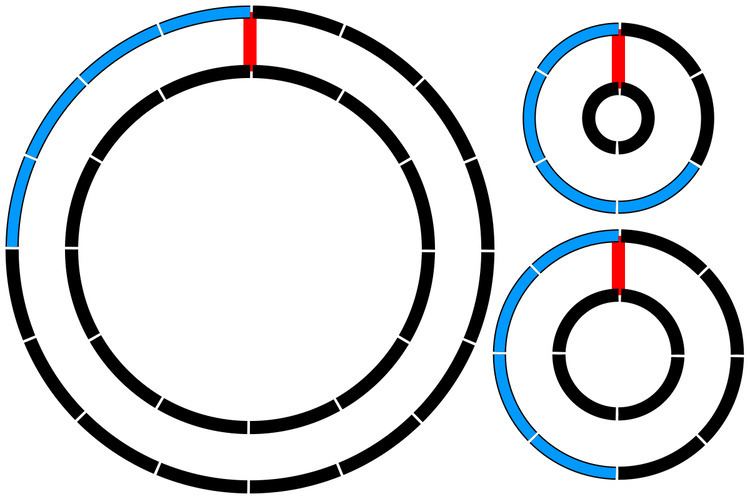 | ||
String girdling Earth is a mathematical puzzle with a counterintuitive solution. In a common version of this puzzle, string is wrapped around the equator of a perfectly spherical Earth. This string is cut and a piece 1 metre (3 ft 3 in) in length is added in. The string is now rearranged so that it is at a uniform height above the equator. The question that is then posed is whether the gap between string and Earth will allow the passage of a car, a cat or a thin knifeblade.
Solution
Considering that 1 metre (3 ft 3 in) is almost negligible compared with the 40,000 km (25,000 mi) circumference, the first response will be that the new position of the string will be no different from the original surface-hugging position. Surprisingly, the answer is that a cat will easily pass through the gap, the size of which will be 1/2π metres or about 16 cm (6.3 in). Even more surprising is that the size of the sphere or circle around which the string is spanned is irrelevant, and may be anything from the size of an atom to the Milky Way — the result will remain about 16 cm (6.3 in).
Let C be the Earth's circumference, R be its radius, c be the added string length and r be the added radius. As a circle of radius R has a circumference of 2πR ,
regardless of the value of C .
A corollary is that, to raise the original string 16 cm (6.3 in) off the ground all the way around the equator, only about 1 metre (3 ft 3 in) needs to be added.
This also means that an athletics track has the same offset between starting lines on each lane, equal to 2π the width of the lane, whether the circumference of the stadium is the standard 400 m (1,300 ft) or the size of the Milky Way.
